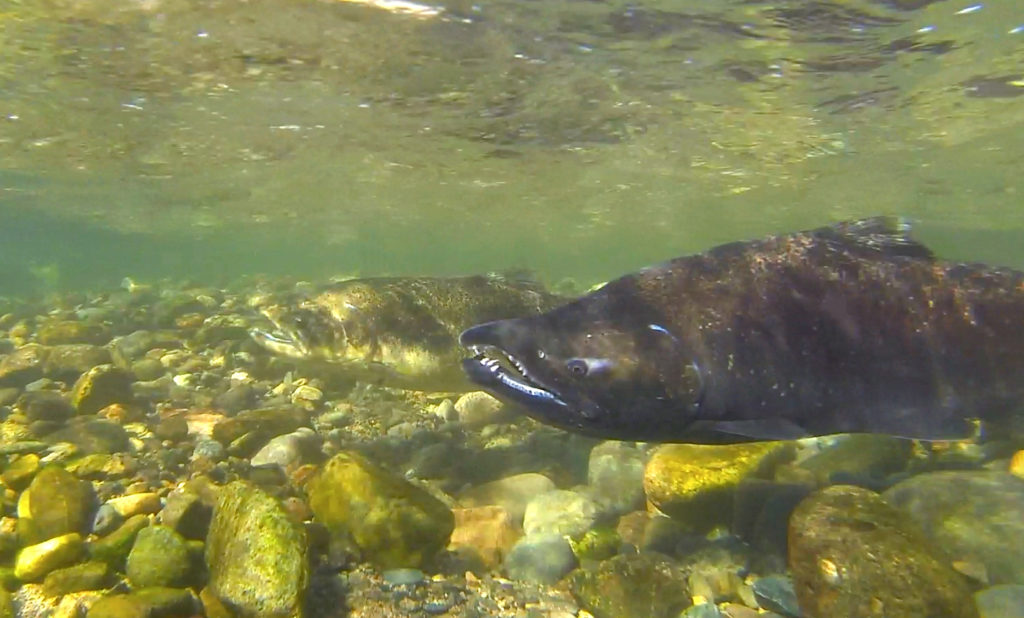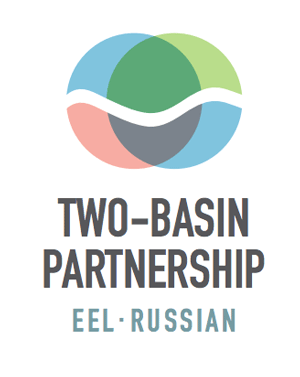
From the powerhouse, the diverted water flows into the East Branch of the Russian River. Some of the water discharged from the powerhouse is diverted into canals from which the Potter Valley Irrigation District (PVID) receives water under a water supply contract with PG&E and its own water rights license. The remaining water discharged from the powerhouse flows down the East Fork Russian River into Lake Mendocino, just outside Ukiah. Releases from Lake Mendocino go into East Fork of the Russian River, which provides water for farmers, businesses, and residents in Mendocino, Sonoma and Marin Counties.
- Fish Passage and Habitat Loss: The Eel River is home to several fish populations at risk of extinction including Southern Oregon/Northern California Coast Coho salmon, California Coastal Chinook salmon, and Northern California steelhead. Scott Dam completely blocks access to over 100 miles of historic spawning and rearing habitat and has contributed to declines in the abundance and distribution of winter steelhead, summer steelhead, and Chinook salmon in the upper mainstem portion of the Eel River watershed.
- Tribal Resources: The culture and history of the people of the Round Valley Tribes and the Wiyot Tribe have been tied to the Eel River since time began. The Eel River and the fish it supports today remain central to the cultural identity of the Tribes and is inexorably tied to Tribal traditions and ceremonies. Declines in salmon and steelhead populations affect the Tribes’ ability to rely on the Eel River fishery for harvesting and other subsistence purposes.
- Invasive Species: Lake Pillsbury provides breeding and rearing habitat for the invasive Sacramento pikeminnow. The pikeminnow feeds on juvenile salmon and steelhead, further contributing to their population declines.
- Water temperature impacts: Dams alter water temperatures in the river downstream. These changes seasonally affect natural cues salmon and steelhead require to migrate downstream as juveniles and upstream as adults.
- Altered flow regimes: Dam operations can result in artificially low mainstem flows as Lake Pillsbury fills during the first heavy rains each fall. Because flows out of the Potter Valley Project are sometimes reduced during this process, migratory fish can be confused by different rates of flow coming from the Eel’s tributaries and the mainstem river. These uneven flow patterns can negatively impact fall-run Chinook salmon adult migration patterns.
- Recreation: The reservoir created by Scott Dam, Lake Pillsbury, provides recreational opportunities for boaters, campers, anglers, and homeowners. It also supports several businesses around the lake, which are an important local economic driver.
- Fire Suppression: Of critical importance to the area is the value of the water stored in Lake Pillsbury used for fire suppression by Cal Fire and the U.S. Forest Service.
- Environmental Flows: A portion of the water stored in Lake Pillsbury is reserved each year for environmental flow release at the discretion of state and federal resource agencies. These environmental flows can be used to aid the migration of salmonids. Water released at the base of Scott Dam during the summer makes the 12 mile stretch of river between Scott Dam and Van Arsdale a cool water rearing environment for steelhead. The relative value of this cool water rearing environment compared to the hundred-plus miles of cold-water tributary habitat upstream of Scott Dam is being evaluated through the feasibility study.
- Economic Vitality: Eel River fisheries have declined significantly since the project was built, due in part to the project’s operations as well as the lack of fish passage to the upper parts of the watershed. Other factors that have contributed to the decline of the health of the watershed include erosion caused by road building, the now-defunct North Coast Railroad, and timber harvest; water diversions and water quality concerns related to commercial cannabis cultivation; and natural occurrences including floods and drought. Sport, commercial, and tribal fishing opportunities are lost as a result of severely compromised fisheries, as are the economic benefits of a healthy recreational economy
- Water Supply: The project provides a year-round water supply for communities in the Russian River basin. On average, approximately 62,500 acre-feet of Eel River water is diverted each year into the Russian River. Communities in Mendocino, Sonoma, and Marin counties depend on water diverted from the Eel River into Lake Mendocino for their domestic and industrial water supplies.
- Environmental Flows: Eel River water that is diverted, and subsequently stored in Lake Mendocino, is used to help meet flow requirements under the Endangered Species Act to protect threatened salmon and steelhead in the Russian River.
- Agriculture: Water diverted from the Eel River is used to irrigate thousands of acres of farmland. The prime agricultural areas dependent upon this water supply are Potter Valley, Redwood Valley, Ukiah Valley and Alexander Valley. These areas produce wine grapes, pears, cattle, and specialty crops worth hundreds of millions of dollars.
- Economic Vitality: The economies of Mendocino County and Sonoma County benefit significantly from the water diverted through the Potter Valley Project. Marin County also benefits from the diversion. This diverted water provides irrigation water for thousands of acres of crops, domestic water for more than 600,000 residents, recreational opportunities, and wildlife habitat along the Russian River.
On January 25, 2019, PG&E withdrew its relicensing application from the Federal Energy Regulatory Commission (FERC), stating that it will not seek or hold a new license for the Project. According to PG&E, “Potter Valley has long been recognized by PG&E as uneconomic for PG&E’s ratepayers (i.e., the cost of production exceeding the cost of alternative sources of renewable power on the open market). Regrettably, continued declining energy markets, potential increased costs associated with anticipated new license conditions, and challenging financial circumstances have caused PG&E to conclude that it cannot justify further expenditures to its ratepayers associated with the Project.”
PG&E’s decision created an opportunity for a locally led coalition to explore terms of a new license that will materially support both basins and meet regional needs.
The Parties filed a Project Plan with FERC describing their approach to licensing the Potter Valley Project. The ambitious plan proposes to advance Eel River restoration by removing Scott Dam while meeting Russian River basin water needs. Additional components of the Project Plan include improving a water diversion infrastructure at Cape Horn Dam and developing infrastructure to provide water to meet summer irrigation needs for farmers and ranchers in Potter Valley.
The Project Plan is the first step. Parties will need to create a new Regional Entity to own and manage the Project. This new entity will be composed of representatives from local interests with a stake in Eel and Russian River water management.
The Federal Energy Regulatory Commission (FERC) has issued its Study Plan Determination, which indicates which studies the Two-Basin Partnership must complete to allow FERC – and the Partnership itself – to move forward with a clear understanding of the costs and benefits associated with implementing the Two-Basin Solution. There will be opportunities for the public to comment and provide input once these studies are complete and have been submitted to FERC. In addition, the Partnership intends to host informational public meetings where the public can ask questions and provide comment.
More information about next steps is available on the Schedule page of this website.
At this point, only very preliminary studies are available to inform cost estimates. Based on these initial studies, direct capital costs in 2020 dollars for the proposed FERC licensed Project facilities range from $100 to $400 million.
In addition to costs of the proposed FERC licensed Project facilities, water infrastructure for PVID is estimated to cost $30 to $120 million.
The studies proposed for the next phase of the effort will further define and inform cost estimates.
Parties anticipate a purchase and sale agreement with PG&E that funds elements of the Project and relieves PG&E of the significant liabilities associated with project ownership.
In addition, the Two-Basin Partnership will explore funding from federal, state, and private sources. Parties anticipate ongoing Project operations would be funded by the sale of electricity, sale of water, and local revenues generated by the regional entity.

